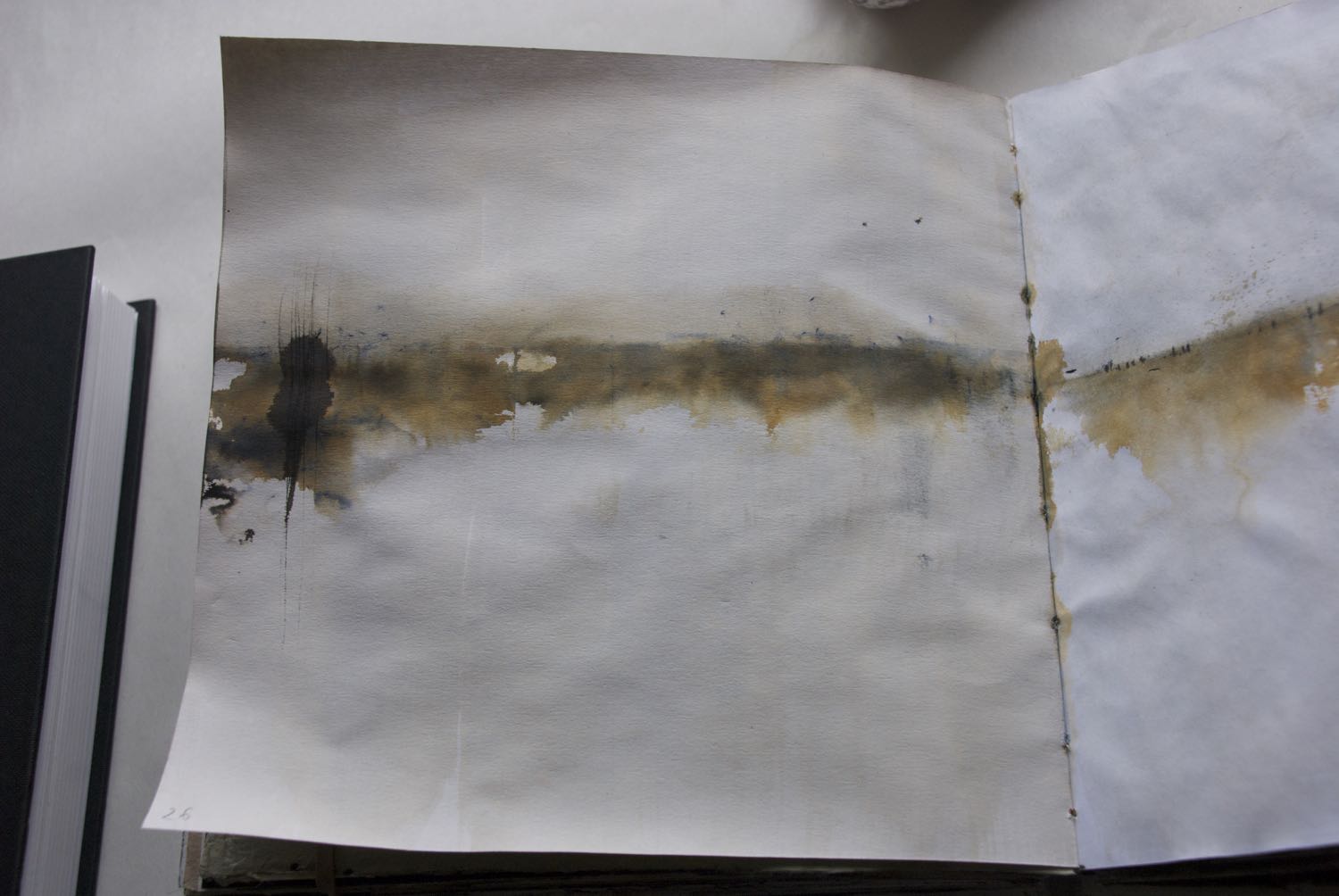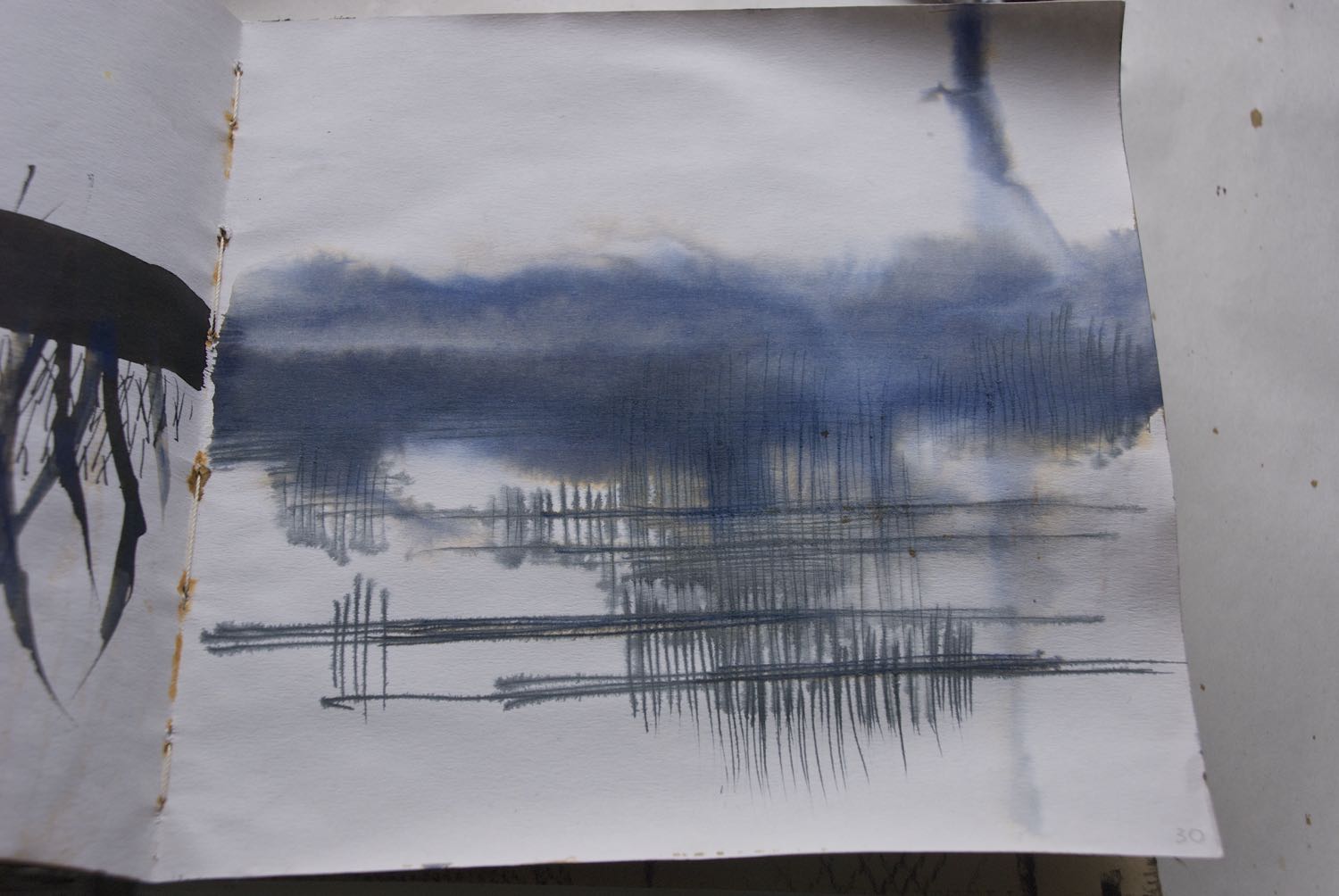Limited space and limited time mean I tend to focus on either one thing or another in my studio. It's hard to switch back and forth too quickly between screen-printing, dyeing or stitching. So although I have developed more monoprints since my last post, I was conscious how much I still needed to do to get work ready for exhibition in September. So I am back in stitch mode.
I joked to friends that I am "panic stitching"! An exaggeration, because in practice I have plenty of time, but there is that (rather helpful) sense of a looming deadline that is driving me to get the work done. I know I won't feel completely settled again until it is.
The stitching phase is so different from any other part of the process. It means spending hours at a time with a single piece of work, studying minute marks on the cloth and deciding stitch by stitch how to respond to those. I can be quite fidgety and so it can be hard to settle down at first. Listening to good music helps. Another tactic I've found is to set a timer for one hour and work until it goes off. All the usual distractions have to wait until then, by which time it's reasonable to have a short break anyway. In practice I've usually settled by then and am happy to keep going.
I'm stitching the largest pieces first so the task will get easier and progress faster as I go on. The first two are always the hardest as I work out my approach. False starts, trying things out, changing my mind, starting again until I'm happy it works.
In the meantime the experimentation hasn't completely stopped. I've reviewed and organised all my samples, pinned everything up on a wall to have a look and done some drawing. Plenty of time to think about all this while I stitch.
Drawings spread out on the table















